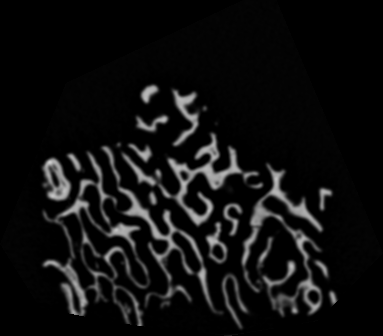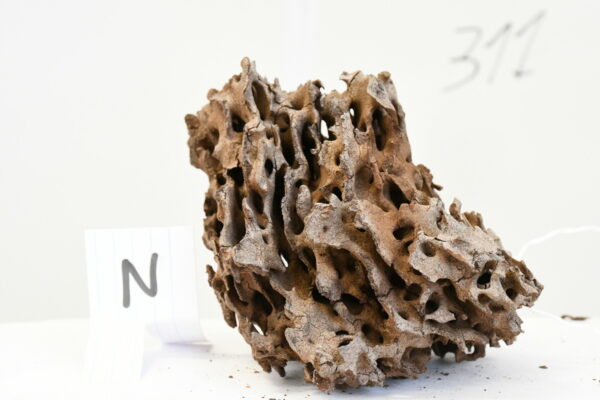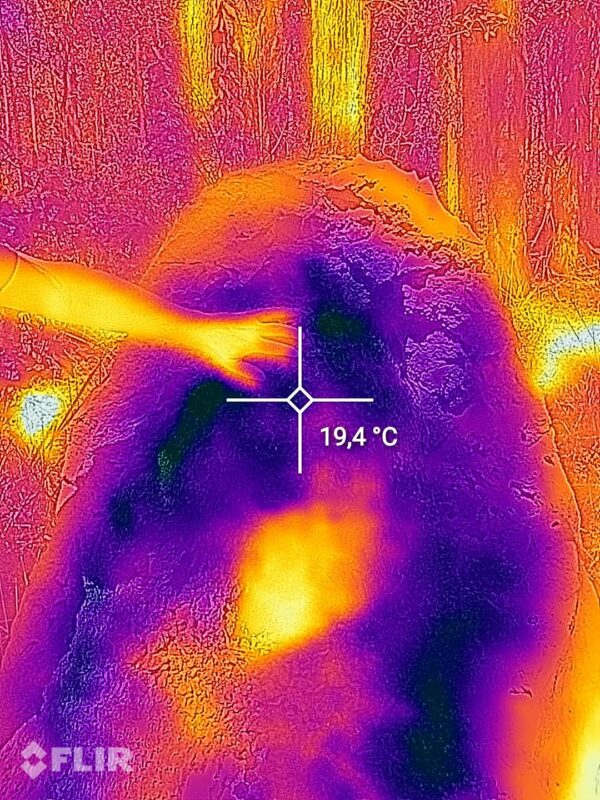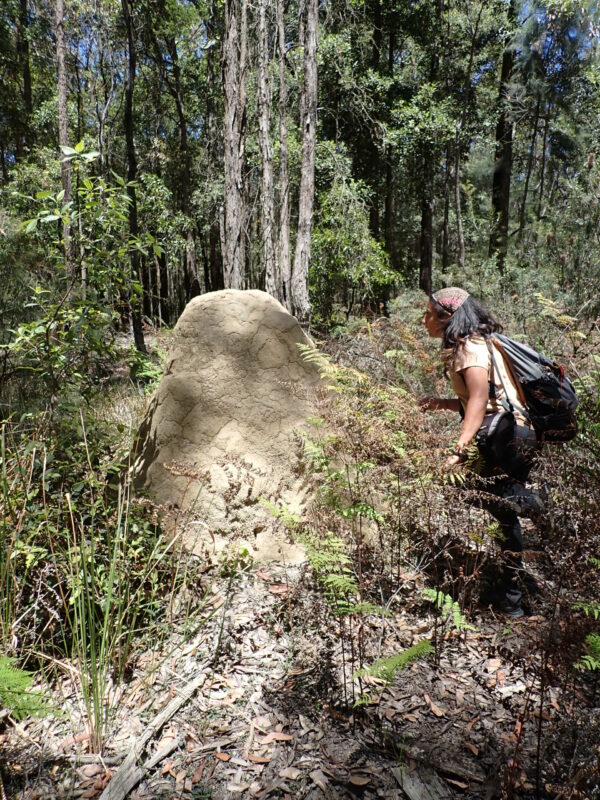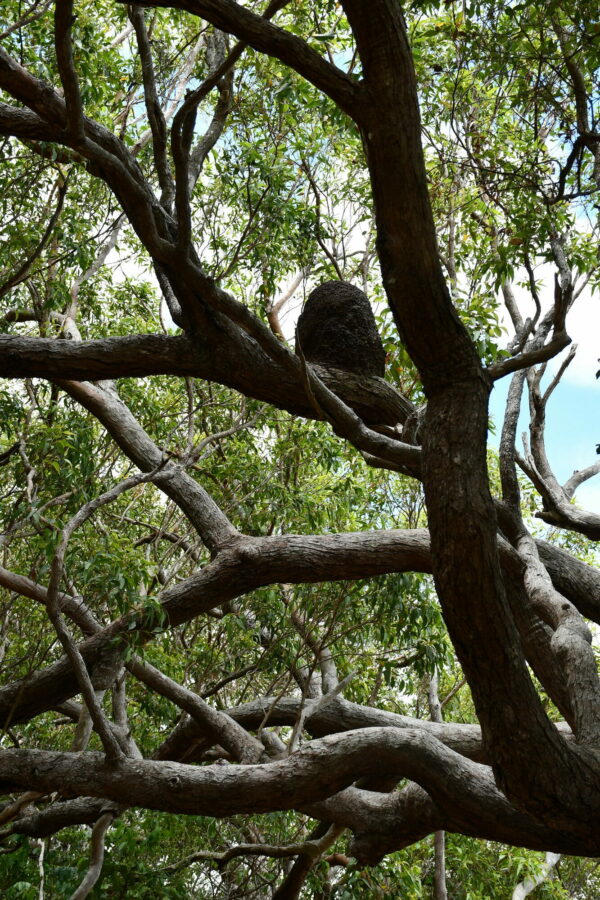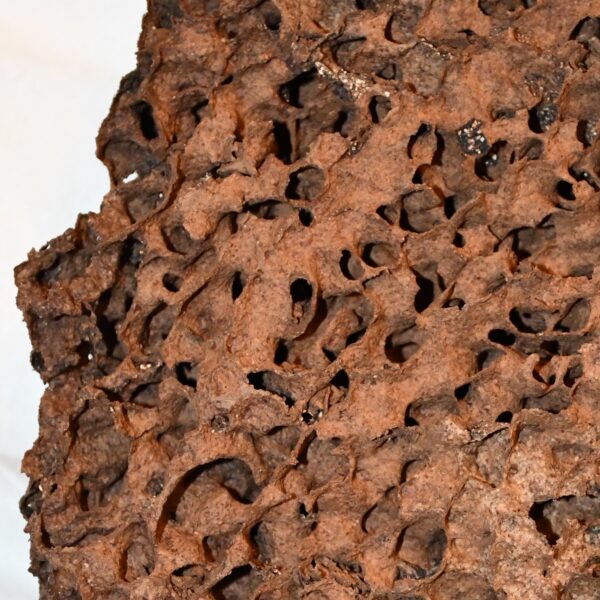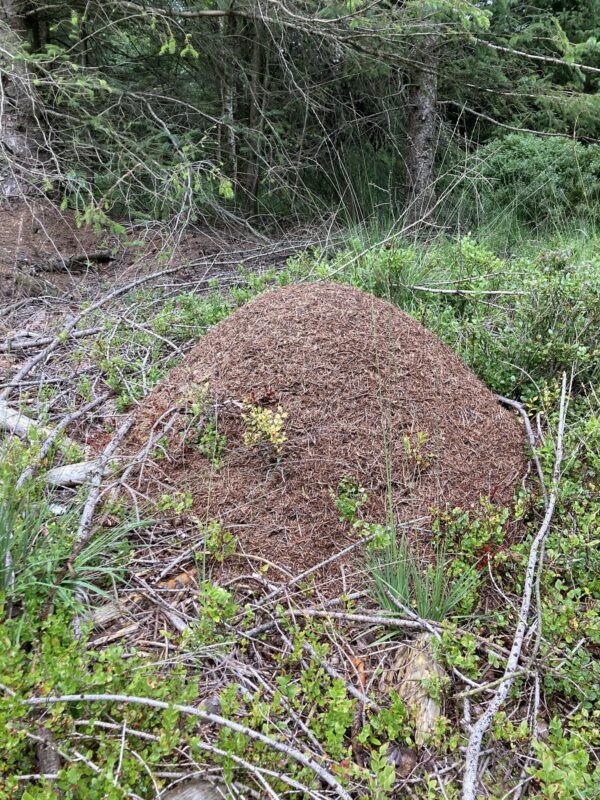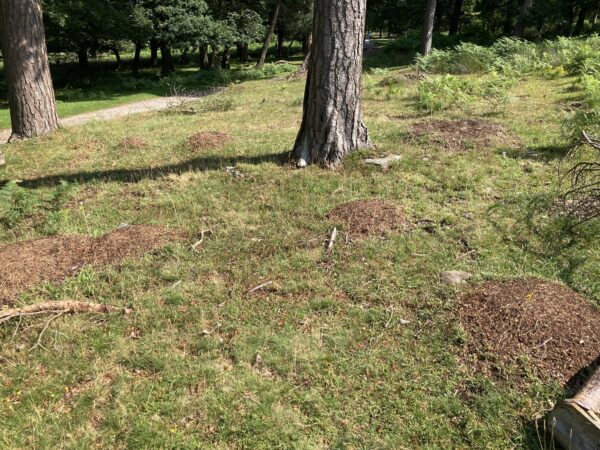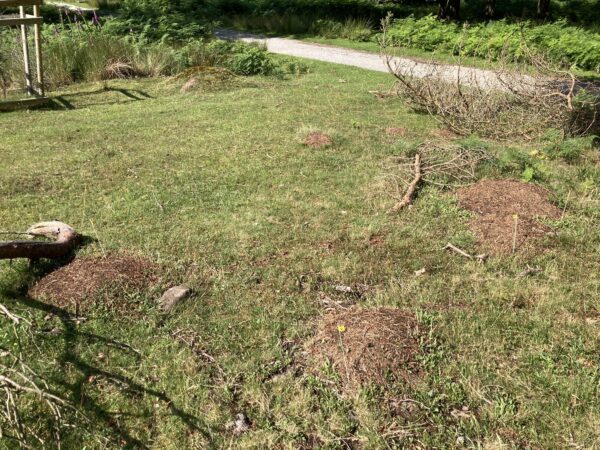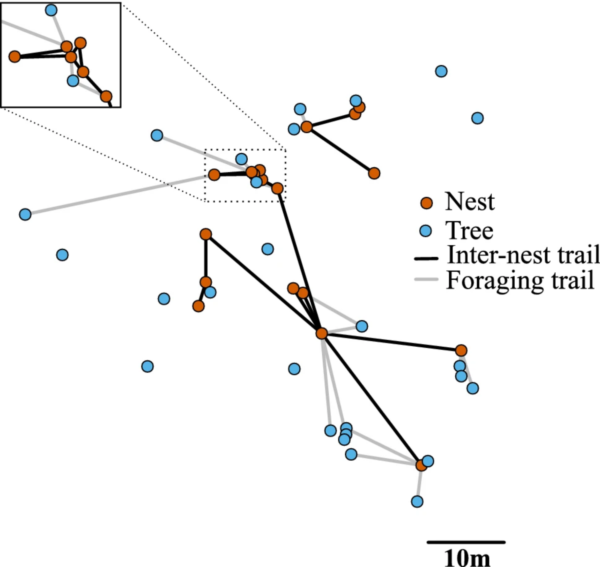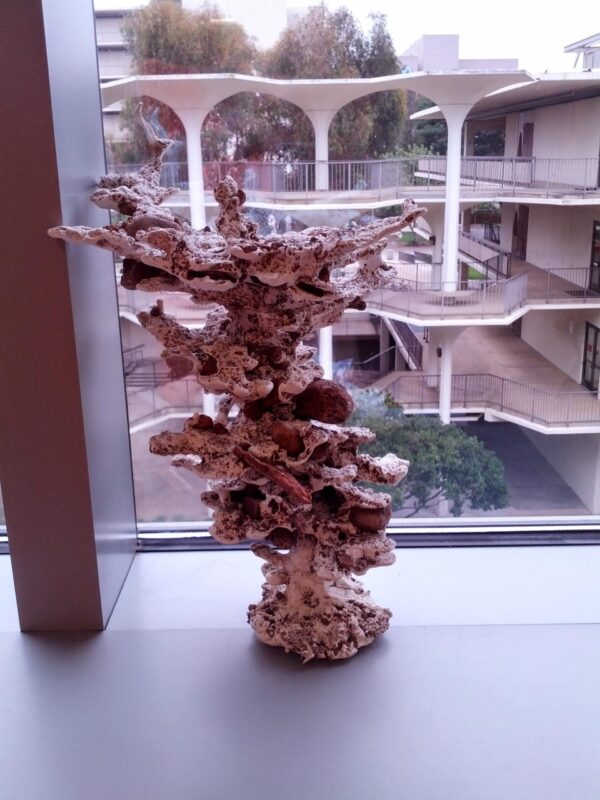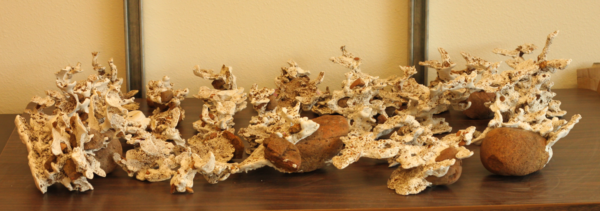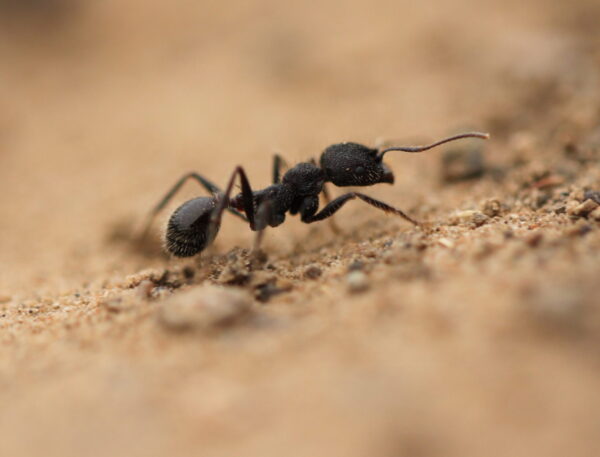This was a large mound built by nasute termites. Based on other nests found in nearby locations, we believe that it was built by Nasutitermes magnus.
The mound material appeared as a mixture of sand and clay, easy to cut but producing a lot of dust. The external crust of the mound was thin, and full of small bumps that somehow reveal the spatial scale of the galleries underneath.
Just below the nest crust, the galleries are completely filled with dry branchlets of Casuarina (the Australian “pine”), which could play a role as insulating material or as stored food for the colony.
After cutting the nest with a saw, we can observe the internal structure. We can see a series of saddle-shaped surfaces, typical of Nasutitermes, but also a clear organisation in concentric layers, which are probably the footprint of multiple expansion events (suggesting that expansion events probably increase the size of the mound by only one or a few layers each time).

![Nasutitermes_magnus_M23_DSC_0698 A termite mound, most likely built by the species Nasutitermes magnus, Queensland, Australia. Mound M23. Photo Andrea Perna [CC BY-SA 3.0]](https://www.morphospace.org/_mamawp/wp-content/uploads/2024/01/Nasutitermes_magnus_DSC_0698-rotated-1066x1600.jpg)
![Nasutitermes_magnus_M23_DSC_0705 A termite mound, most likely built by the species Nasutitermes magnus, Queensland, Australia. The cut across the nest makes visible the internal structure. It is possible to see what is likely to be the footprint of multiple expansion events. Mound M23. Photo Andrea Perna [CC BY-SA 3.0]](https://www.morphospace.org/_mamawp/wp-content/uploads/2024/01/Nasutitermes_magnus_DSC_0705-rotated-1066x1600.jpg)
![Nasutitermes_magnus_M23_DSC_0453 Particular of a mound of Nasutitermes magnus (M23) showing a breach just under the external crust of the mound. All the galleries immediately below the external surface are filled by dry branchlets of Casuarina, which could play a role as insulating material (or, according to alternative hypotheses, as stored food). Photo Andrea Perna [CC BY-SA 3.0]](https://www.morphospace.org/_mamawp/wp-content/uploads/2024/01/Nasutitermes_magnus_DSC_0453-1600x1066.jpg)
![Nasutitermes_magnus_M23_DSC_0391 A termite mound, most likely built by the species Nasutitermes magnus, Queensland, Australia. Photo Andrea Perna [CC BY-SA 3.0]](https://www.morphospace.org/_mamawp/wp-content/uploads/2024/01/Nasutitermes_magnus_DSC_0391-rotated-1066x1600.jpg)
![Nasutitermes_magnus_M23_DSC_0742 Particular of the internal structure of a termite mound, probably built by the termite species Nasutitermes magnus (M23). Photo Andrea Perna [CC BY-SA 3.0]](https://www.morphospace.org/_mamawp/wp-content/uploads/2024/01/Nasutitermes_magnus_DSC_0742-1600x1066.jpg)
![Nasutitermes_magnus_M23_DSC_0723 A termite mound, most likely built by the species Nasutitermes magnus, Queensland, Australia. The cut across the nest makes visible the internal structure. It is possible to see what is likely to be the footprint of multiple expansion events. Mound M23. Photo Andrea Perna [CC BY-SA 3.0]](https://www.morphospace.org/_mamawp/wp-content/uploads/2024/01/Nasutitermes_magnus_DSC_0723-rotated-1066x1600.jpg)
![Nasutitermes_magnus_M23_DSC_0449 Particular of a mound of Nasutitermes magnus (M23) showing a breach just under the external crust of the mound. All the galleries immediately below the external surface are filled by dry branchlets of Casuarina, which could play a role as insulating material (or, according to alternative hypotheses, as stored food). Photo Andrea Perna [CC BY-SA 3.0]](https://www.morphospace.org/_mamawp/wp-content/uploads/2024/01/Nasutitermes_magnus_DSC_0449-1600x1066.jpg)
![Nasutitermes_magnus_M23_DSC_0763 Branchlets of Casuarina, the "Australian pine" (which in reality is not a pine, but a peculiar flowering plant). We found many dry branchlets of Casuarina, cut according to their naturally segmented structure, inside the mounds of Nasutitermes magnus. Photo Andrea Perna [CC BY-SA 3.0]](https://www.morphospace.org/_mamawp/wp-content/uploads/2024/01/Nasutitermes_magnus_DSC_0763-1600x1066.jpg)
![Nasutitermes_magnus_DSC_0399 Particular of a mound of Nasutitermes magnus (M23) showing the external crust of the mound. The crust is thin, and we can see from the outside a series of bumps, that correspond to the spatial scale of galleries inside the mound. Photo Andrea Perna [CC BY-SA 3.0]](https://www.morphospace.org/_mamawp/wp-content/uploads/2024/01/Nasutitermes_magnus_DSC_0399-1600x1066.jpg)
![Nasutitermes_magnus_M23_DSC_0750 Particular of the internal structure of a termite mound, probably built by the termite species Nasutitermes magnus (M23). Photo Andrea Perna [CC BY-SA 3.0]](https://www.morphospace.org/_mamawp/wp-content/uploads/2024/01/Nasutitermes_magnus_DSC_0750-1600x1066.jpg)
